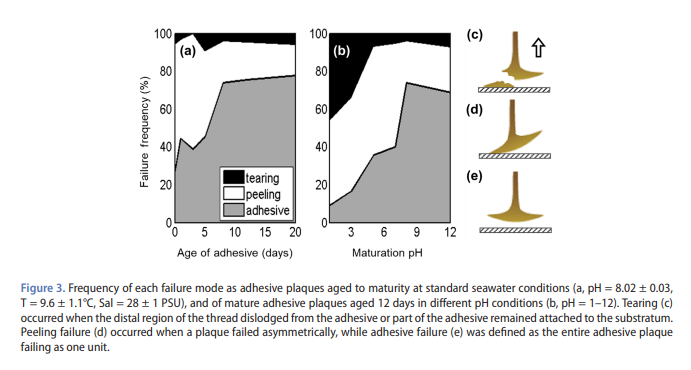Copied the following procedure from what Monica wrote in her lab notebook just so I have it more accessible. I may also add a few things. This is for the byssal threads
data will be logged on this spreadsheet
Setup Procedure
- Open labview Program Omega DFG51-2 Force Gauge Logger.vi
- Open Amscope
- Open the google sheet
- Turn on the lights
Run Test
- Wet and clean the sample with seawater.
- Take a picture of the thread plaque using Amscope software.
- Calibrate the image and record the cross-sectional area in the google sheet and record the conversion factor.
- Turn on the force gauge by hitting the power button.
- Cut the sheet as needed and grip the thread using the hemostat clamp.
- Hang the clamp off of the force gauge.
- Push the down button on the motor and let it run until the sheet is laying flat and there is slack in the thread.
- Using the forceps, hold the sheet down and hit zero button.
- Start the labview logger software by hitting the arrow run button.
- Flip the motor switch up and record the data.
- Monitor the thread plaque during failure and record failure mode (see figure 1 below).
- After failure, hit the stop button and save the file with .txt extension.
- After one animal is finished, return to stack and write that it was tested.
Endy of Day Shutdown Procedure
- Turn off the force gauge.
- Clean workspace.
- Bind up the rest of the samples.
- Turn off the lights.
- Go to GitHub desktop and add summary, commit to main, and push it.
- Document in lab notebook

TODAY
lots of pealers. I’m hoping weather or not they peel is not determined on how wet they are, it seemed if i wet them before force testing they were more likely to peel. All of them were at least damp though.
3 hours (1-4 pm)